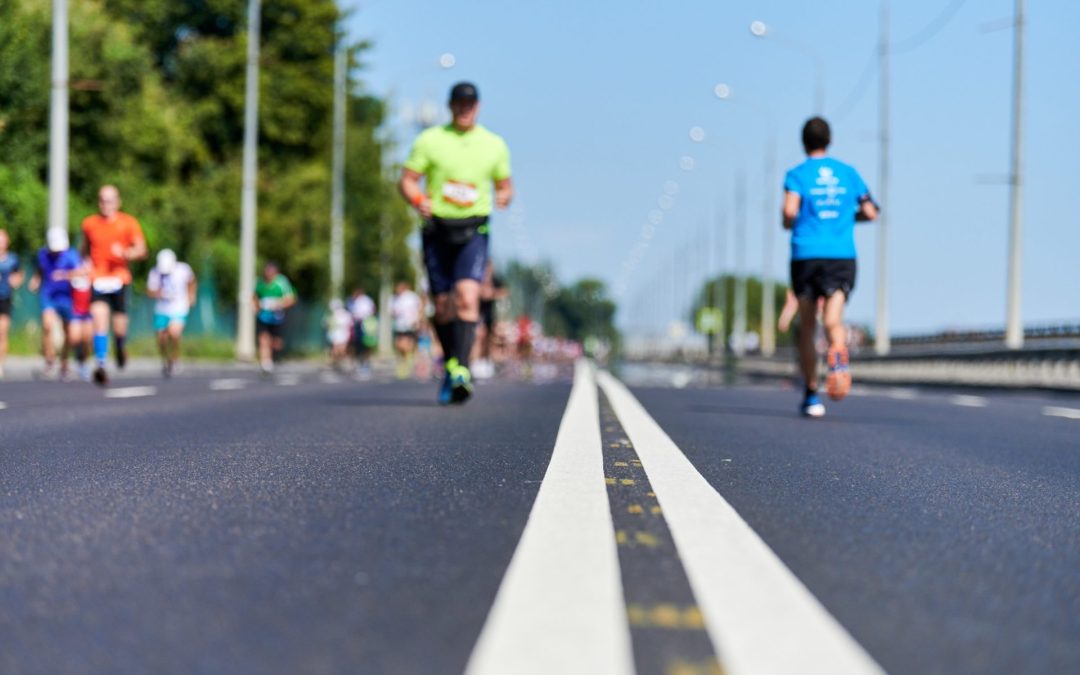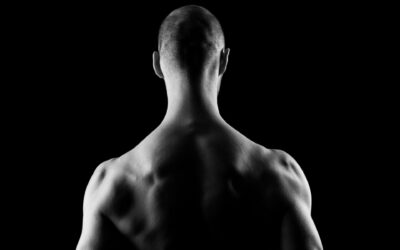As humans, we rely heavily on the ability to chew and swallow our food. But have you ever stopped to wonder about the intricate mechanisms at play when we chew? Behind every bite, there are muscles of chewing (mastication) hard at work.
Chewing is a process that we take for granted, as we do it so often and without much thought. However, it is a complex process that involves a coordinated effort between the muscles, teeth, and nerves.
In this article, we are going to explore everything you need to know about the muscles of mastication. From what muscles are included, their function, what causes pain in each one, and exercises to help strengthen them.
So if you’ve ever experienced jaw pain or weakness, this article is for you!
Functions of the Muscles of Mastication
These muscles are the main drivers of the chewing process and are responsible for the movements of the jaw that grind and crush our food into smaller pieces, making it easier for us to swallow and digest.
Without the muscles of mastication, we would not be able to effectively break down food and extract the nutrients our bodies need. Issues with these muscles can lead to serious health problems, such as malnutrition, as the body may not be able to absorb the necessary nutrients from food.
The muscles of mastication are not just responsible for chewing and swallowing, but they also play a role in maintaining the structure and stability of our jawbone. Regular exercise of these muscles is important to keep them strong and healthy, which can prevent issues such as temporomandibular joint disorder (TMJ).
Common Injuries to the Muscles of Mastication
As with any muscle in the body, the muscles of mastication can become strained or overworked. This can happen due to excessive chewing, clenching, or grinding of teeth, which can lead to pain, discomfort, and even damage to the teeth and jaw.
There are several common injuries that can affect the muscles of mastication.
- TMJ: One of the most prevalent injuries is temporomandibular joint disorder (TMJ), which affects the temporomandibular joint connecting the jawbone to the skull.
Symptoms of TMJ include pain in the jaw joint, clicking or popping noises when opening and closing the mouth, difficulty chewing, and headaches.
- Strains and Sprains: Muscle strains and sprains can also occur in the muscles of mastication, typically from overuse or trauma. Symptoms can include pain, swelling, and limited range of motion.
- Tears and Ruptures: In more severe cases, injury to the muscles of mastication can result in muscle tears or ruptures. These injuries can cause significant pain and dysfunction and may require surgery or other interventions to repair the muscle and restore function.
It is important to be mindful of how we use our jaw muscles and to seek medical attention if we experience any issues.
1. Masseter Muscle
The masseter muscle is one of the most powerful muscles in the human body.
It is a thick, powerful muscle that originates on the zygomatic arch and inserts into the mandible, connecting the lower jawbone to the cheekbone. It is the primary muscle responsible for closing the jaw when chewing, biting, and clenching the teeth.
In addition to its role in mastication, it also plays a crucial role in stabilizing the jaw joint.
Injuries
The masseter muscle can become overdeveloped due to habits such as excessive teeth grinding or chewing gum, leading to a condition known as masseter hypertrophy.
Masseter hypertrophy can lead to pain, discomfort, and dysfunction of the jaw joint. This can cause a square or overly angular jawline and may even lead to pain and dysfunction.
Another common cause of pain in the masseter muscle is bruxism, or teeth grinding. This condition can result in hypertrophy, or overdevelopment, of the masseter muscle, leading to pain, discomfort, and limited jaw movement.
Exercises
Exercises for the masseter muscle can help to improve its strength and flexibility and reduce pain and dysfunction.
One simple exercise is to place a small object, such as a pencil or wooden stick, between the teeth and slowly clench the jaw around it. This exercise can help to strengthen the masseter muscle and promote proper jaw alignment.
In addition to exercises, other treatments for masseter muscle pain may include massage, heat or ice therapy, and anti-inflammatory medications.
Swollen Masseter Muscle Symptoms and Treatment
The masseter muscle is a large muscle located in the jaw that is responsible for chewing and clenching the teeth. When this muscle becomes inflamed or overworked, it can result in a swollen masseter muscle. This condition is often associated with bruxism, or teeth grinding, which can cause tension and strain in the jaw muscles. Symptoms of a swollen masseter muscle may include pain and tenderness in the jaw, difficulty opening the mouth, and headaches. Treatment may involve pain management techniques, rest, and physical therapy to alleviate the inflammation and improve jaw function. In some cases, the use of a mouthguard may also be recommended to prevent teeth grinding.
2. Temporalis Muscle
The temporalis muscle is a broad, fan-shaped muscle located on the side of the head. It originates on the temporal bone and inserts into the mandible, allowing for the movement of the jaw during chewing and biting.
The primary function of the temporalis muscle is to elevate and retract the mandible, which creates proper chewing and biting of food. The temporalis muscle works together with the masseter muscle to generate the force needed for chewing, biting, and clenching.
It also has a role in speaking and is important for maintaining the position of the jawbone. As well, it is a crucial component for stabilizing the jaw during movement and is essential for proper speech and facial expression.
Injuries
Common causes of pain in the temporalis muscle can include bruxism, tension headaches, and injury. TMJ disorder can also cause pain and dysfunction in the temporalis muscle, leading to limited jaw movement and discomfort.
Pain in the temporalis muscle can result in symptoms of headaches, jaw pain, and even ear pain.
Exercises
Exercises for the temporalis muscle can help to improve its strength and flexibility, reducing pain and dysfunction.
One simple exercise is to place the fingertips on the temples and gently press while clenching the jaw. This exercise can help to stretch and relax the temporalis muscle, reducing pain and tension.
Another exercise for the temporalis muscle is to place the fingertips on the top of the head and gently apply pressure while clenching the jaw.
Other treatments for temporalis muscle pain may include massage, heat or ice therapy, and anti-inflammatory medications.
3. Lateral Pterygoid Muscle
The lateral pterygoid muscle is another key muscle of mastication, located on the inside of the mandible. It originates on the sphenoid bone and inserts into the condyle of the mandible, allowing for the movement of the jaw during chewing and biting.
The primary function of the lateral pterygoid muscle is to move the mandible forward and side to side, allowing for lateral grinding motions when chewing. It is also involved in protruding the jaw and opening the mouth.
Along with other muscles of mastication, it plays a role in stabilizing the jaw during movement and is essential for proper speech and facial expression.
Injuries
Dysfunction of this muscle can lead to temporomandibular joint disorder (TMJ), which can cause pain and discomfort in the jaw joint. It could also manifest as difficulty opening or closing the mouth, clicking or popping sounds in the jaw, and muscle spasms.
Common causes of pain in the lateral pterygoid muscle can include bruxism, TMJ disorder, and injury. The muscle can become tight and inflamed, leading to limited jaw movement and discomfort.
Exercises
Exercises for the lateral pterygoid muscle can help to improve its strength and flexibility, reducing pain and dysfunction.
One exercise is to place a small object, such as a cotton swab, between the teeth and gently move the jaw from side to side. This exercise can help to strengthen the lateral pterygoid muscle and promote proper jaw alignment.
Another exercise for the lateral pterygoid muscle is to place the fingertips on the outside of the mandible and gently press while opening and closing the jaw. This exercise can help to stretch and relax the muscle, reducing pain and tension.
4. Medial Pterygoid Muscle
The medial pterygoid muscle is a small, thick, and powerful muscle located in the jaw that plays a crucial role in the process of mastication. This muscle is located deep in the cheek and is attached to the jawbone and the sphenoid bone in the skull.
The primary function of the medial pterygoid muscle is to elevate the jaw and move it from side to side. This muscle works in tandem with the lateral pterygoid muscle to move the jaw from side to side during the process of chewing.
Injuries
One common injury is known as medial pterygoid muscle strain, which can cause pain and discomfort in the jaw area. This injury can occur due to excessive grinding or clenching of the teeth, poor posture, or trauma to the jaw.
Pain in the medial pterygoid muscle is often described as a dull ache or tightness in the jaw area, as well as difficulty opening and closing the mouth. This pain can also radiate to other areas of the face, neck, and head.
Exercises
To help alleviate pain and strengthen the medial pterygoid muscle, there are several exercises that can be done.
One effective exercise involves placing a small object, such as a pen, between your molars and biting down on it for a few seconds before releasing it. This can help strengthen the muscle and improve jaw mobility.
Another exercise involves gently opening and closing the mouth while applying light pressure to the outside of the jaw with your hands. This can help stretch and strengthen the muscles in the jaw area.
5. Buccinator Muscle
The buccinator muscle is a thin, flat muscle located in the cheek that plays a vital role in the process of mastication and facial expression.
This muscle runs horizontally across the cheek and is attached to the maxilla and mandible bones in the jaw.
The primary function of the buccinator muscle is to compress the cheeks, which is necessary for tasks such as blowing, sucking, and keeping food in the mouth during chewing. In addition, this muscle also helps to pull the corners of the mouth backward, as in a smile or grin.
Injuries
A common injury to this muscle is known as buccinator muscle strain, which can result from excessive use of straws or other objects in the mouth, as well as overuse during chewing or speech.
Pain in the buccinator muscle is often described as a dull ache or pressure in the cheek area, as well as difficulty moving the cheeks and mouth. This pain can also be accompanied by difficulty swallowing or speaking.
Exercises
To help alleviate pain and strengthen the buccinator muscle, there are several exercises that can be done.
One simple exercise involves blowing up a balloon and holding the air in the cheeks for a few seconds before releasing. This can help strengthen the muscle and improve overall facial muscle control.
Another exercise involves sucking in the cheeks and holding for a few seconds before releasing. This can help tone the muscles in the cheek area and improve facial symmetry.
6. Suprahyoid Muscles
The suprahyoid muscles are a group of four small muscles located above the hyoid bone in the neck. These muscles are responsible for a variety of important functions related to swallowing, speaking, and supporting the jaw.
The four muscles that make up the suprahyoid muscles are the digastric, mylohyoid, geniohyoid, and stylohyoid muscles.
- The digastric muscle has two bellies that connect the hyoid bone to the skull and the jawbone.
- The mylohyoid muscle forms the floor of the mouth.
- The geniohyoid muscle connects the chin to the hyoid bone.
- The stylohyoid muscle connects the styloid process of the skull to the hyoid bone.
The primary function of the suprahyoid muscles is to elevate the hyoid bone and the larynx during swallowing and speaking. They also help to support the jaw and assist in opening the mouth.
Digastric Muscle
The digastric muscle is a paired muscle located in the neck that runs from the mastoid process of the temporal bone to the hyoid bone and mandible. It is involved in a variety of functions, including swallowing, speaking, and mastication. The digastric muscle is divided into two bellies, the anterior and posterior, which work together to elevate the hyoid bone during swallowing and speaking. The muscle also helps to depress the mandible during opening of the mouth. The digastric muscle is innervated by the facial nerve, and injuries or disorders affecting this nerve can lead to weakness or paralysis of the muscle.
Geniohyoid Muscle
The geniohyoid muscle is a narrow, fan-shaped muscle located in the neck that runs from the chin to the hyoid bone. It is involved in the process of swallowing and plays a key role in keeping the airway open during breathing. The geniohyoid muscle contracts during swallowing, helping to elevate the hyoid bone and larynx and open the upper esophageal sphincter. It also aids in the expansion of the upper airway during inhalation, helping to prevent airway obstruction. The geniohyoid muscle is innervated by the first cervical nerve, and injuries or disorders affecting this nerve can lead to weakness or paralysis of the muscle.
Hyoid Bone Pain
The hyoid bone is a horseshoe-shaped bone located in the neck between the chin and the thyroid cartilage. It is suspended by muscles and ligaments and serves as an anchor point for the tongue and other muscles involved in speech and swallowing. When this bone becomes injured or inflamed, it can result in hyoid bone pain. This pain is typically described as a dull ache or a sharp stabbing sensation in the throat or neck. Causes of hyoid bone pain can include trauma, infection, and inflammation. Treatment options may include pain management techniques, rest, and physical therapy. In severe cases, surgical intervention may be necessary.
Hyoid Bone Syndrome
Hyoid bone syndrome, also known as Eagle syndrome, is a rare condition characterized by pain and discomfort in the throat, neck, and ear. It occurs when the hyoid bone, a horseshoe-shaped bone located in the neck, becomes elongated or displaced, causing pressure on surrounding nerves and tissues. Symptoms may include difficulty swallowing, a sensation of a foreign object in the throat, ear pain, and headaches. Diagnosis is typically made through imaging studies such as a CT scan or MRI. Treatment may involve pain management techniques, physical therapy, and in severe cases, surgical removal of the hyoid bone or part of it.
Mylohyoid Muscle Pain
The mylohyoid muscle is a thin, triangular muscle located in the floor of the mouth. It is responsible for elevating the hyoid bone, which helps to open the mouth and move the tongue. When this muscle becomes strained or overworked, it can result in mylohyoid muscle pain. This pain is often described as a dull ache or throbbing sensation in the area of the chin and jaw. It may also be accompanied by difficulty swallowing or talking. Mylohyoid muscle pain can be caused by a variety of factors, including dental problems, bruxism (teeth grinding), or trauma to the jaw. Treatment may involve rest, pain medication, and physical therapy.
Injuries
Common injuries to the suprahyoid muscles include strains, sprains, and tears.
These injuries can occur due to overuse or sudden trauma, such as a blow to the head or neck. Symptoms of a suprahyoid muscle injury may include pain or tenderness in the neck, difficulty swallowing or speaking, and difficulty opening the mouth.
Pain in the suprahyoid muscles may feel like a dull ache or a sharp, stabbing pain in the neck, jaw, or throat. The pain may be aggravated by swallowing, speaking, or moving the head and neck.
Exercises
Exercises for the suprahyoid muscles can help to strengthen these muscles and prevent injury. Some exercises that can be helpful include the tongue press and chin tuck.
The tongue press involves pressing the tongue against the roof of the mouth and holding it for several seconds.
The chin tuck involves tucking the chin in towards the chest and holding it for several seconds.
7. Infrahyoid Muscles
The infrahyoid muscles, also known as the strap muscles, are a group of four muscles located below the hyoid bone in the neck. These muscles play an important role in the movement and support of the larynx, as well as in swallowing and speaking.
The four muscles that make up the infrahyoid muscles are the sternohyoid, omohyoid, thyrohyoid, and sternothyroid muscles.
- The sternohyoid muscle runs from the sternum to the hyoid bone
- The omohyoid muscle extends from the scapula to the hyoid bone.
- The thyrohyoid muscle connects the thyroid cartilage to the hyoid bone.
- The sternothyroid muscle runs from the sternum to the thyroid cartilage.
The primary function of the infrahyoid muscles is to lower the hyoid bone and the larynx during swallowing and speaking. They also help to stabilize the larynx and support the neck.
Thyrohyoid Muscle
The thyrohyoid muscle is a thin, strap-like muscle located in the neck that runs from the thyroid cartilage of the larynx to the hyoid bone. It is an important muscle involved in the process of swallowing and speaking. During swallowing, the thyrohyoid muscle contracts, pulling the hyoid bone upward and forward and helping to elevate the larynx. This movement helps to protect the airway and prevent food or liquid from entering the lungs. The thyrohyoid muscle is innervated by the first cervical nerve, and injuries or disorders affecting this nerve can lead to weakness or paralysis of the muscle.
Thyrohyoid Ligament
The thyrohyoid ligament is a narrow band of fibrous tissue that connects the thyroid cartilage to the hyoid bone in the neck. It is located just above the thyroid gland and is an important landmark in the anatomy of the neck. The thyrohyoid ligament serves several functions, including providing stability to the larynx and aiding in the movement of the hyoid bone during swallowing and speaking. It also plays a role in the production of sound by controlling the tension of the vocal cords. In some medical conditions, such as thyroid cancer, the thyrohyoid ligament may need to be removed as part of a surgical procedure.
Thyrohyoid Membrane
The thyrohyoid membrane is a thin, fibrous sheet that connects the thyroid cartilage of the larynx to the hyoid bone in the neck. It forms a boundary between the upper respiratory and digestive tracts and plays an important role in the process of swallowing. The membrane contains several structures, including the thyrohyoid ligament, which provides stability to the larynx, and the superior laryngeal nerve, which supplies sensory and motor innervation to the larynx. The thyrohyoid membrane is also a site of potential injury during surgical procedures involving the larynx or hyoid bone.
Omohyoid Muscle Pain
The omohyoid muscle is a long, thin muscle located in the neck. It runs from the shoulder blade to the hyoid bone in the throat. When this muscle becomes strained or overused, it can lead to omohyoid muscle pain. This pain is typically described as a dull ache or tightness in the neck and shoulder area. It may also be accompanied by stiffness and limited range of motion in the neck. Omohyoid muscle pain can be caused by a variety of factors, including poor posture, repetitive strain, and trauma. Treatment options may include rest, physical therapy, and pain management techniques such as heat or ice therapy. In some cases, surgery may be necessary to alleviate the pain.
Injuries
Common injuries to the infrahyoid muscles include strains, sprains, and tears.
These injuries can occur due to overuse or sudden trauma, such as a blow to the head or neck. Symptoms of an infrahyoid muscle injury may include pain or tenderness in the neck, difficulty swallowing or speaking, and a hoarse or raspy voice.
Pain in the infrahyoid muscles may feel like a dull ache or a sharp, stabbing pain in the neck. The pain may be aggravated by swallowing, speaking, or moving the head and neck.
Exercises
Exercises for the infrahyoid muscles can help to strengthen these muscles and prevent injury. Some exercises that can be helpful include chin retractions, and head lifts.
Chin retractions involve pulling the chin back towards the neck and holding for a few seconds before releasing.
Head lifts involve lying on your back and lifting your head off the ground while keeping your shoulders and neck relaxed. Hold your head in this elevated position for a few seconds, then relax.
Wrap-Up
Overall, the muscles of mastication are a remarkable and essential part of our anatomy, allowing us to nourish our bodies and maintain our health.
Taking the time to appreciate the intricate workings of these muscles can help us understand and appreciate the importance of good oral health practices, including proper chewing techniques, and avoiding overuse and straining.
Now that you know everything about the muscles of mastication, you can play a more active role in keeping the muscles you eat with happy and healthy.
Zoppler is reader supported and may earn affiliate commissions from links on this page. We support and believe in all the products and services we promote and are affiliated with.











